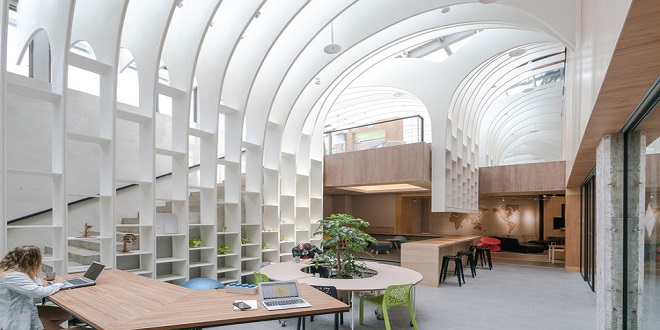How to Improve Indoor Air Quality in Public Spaces

We quickly become aware of poor air quality when we’ve entered somewhere. We might experience a tight chest, perhaps some wheezing. If we remain there for any length of time, our eyes may get dry and we could feel faint. Repeated exposure to bad air may cause illness or even death in certain circumstances.
Not only in our towns and cities, but also in every other sort of indoor place. Air quality is important not just where we reside, but also in all sorts of indoor spaces.
Why is air quality so vital, and what steps can we take to improve it?
Why Is Air Quality In Indoor Environments So Crucial?
Most of us spend the bulk of our lives inside, with a large portion of that time spent at work. As a result, good air quality in the workplace is essential to our general health. Every year, 24,000 people die in the United Kingdom as a result of poor air quality. The cost of poor health caused by air pollution to the NHS has been calculated at £20 billion each year.
The Environment Act 1995, as well as the National Air Quality Strategies of 1997 and 2000, regulate air quality in the United Kingdom. The Air Quality Strategy lays out a regulatory framework for air quality management and assessment in the UK, including pollution standards and goals for a number of key pollutants.
The air quality inside a building is influenced by the air quality outside of it, much like the air quality in the immediate environment affects it. If your business is situated next to a busy road junction, the air quality will be considerably worse than if it were located beside green fields.
Poor air quality in the workplace has a negative impact on employee health, absenteeism, and productivity.
What Are Some Of The Advantages Of Making Sure It’s As Good As It Can Be?
There are a number of elements that influence office and workplace air quality. While pollution from the outside is important, it isn’t the only factor in determining your building’s air quality. Even in heavily populated urban areas, the air quality inside the structure may be up to two to five times worse than outside.
Indoor air pollution has the potential to severely harm the health of its residents. In certain situations, the impact can be so severe that it may even induce “sick building syndrome.” This term refers to the various physical symptoms that indoor air pollution might cause.
Headaches, shortness of breath, dizziness, dry or itchy throat, eyes or skin, tiredness, and mental fog are some of the most frequent symptoms of poor indoor air quality.
Finally, high CO2 levels might contribute to an immune system that is weakened and to poorer health. CO2 concentrations in the air can be especially harmful since they may cause cognitive impairment, which lowers employee output by up to 11%.
You can remove the health risks associated with poor air quality by ensuring that your company’s air quality is as good as possible.
What Is The Best Way To Check For Air Quality And Ventilation?
It’s critical to test the air quality in a building to ensure that HVAC and other systems are functioning at peak efficiency. An air quality sensor allows you to determine the quality of various gases in the air.
CO2 levels in a room indicate the quality of the air inside. CO2 can displace oxygen, so knowing how much is present is essential. Other factors to consider when assessing air quality include carbon monoxide, particles, germs, and organic compounds. Good ventilation is required in order to minimize the amount of these contaminants in the air.
If the levels of these pollutants are high, it might indicate that your HVAC system is not operating as efficiently as it could. Higher quality air is exchanged in an HVAC system for healthy living conditions in a building.
This method consists of two parts: In the first step, fresh air from outside is introduced into a space through windows or vents. This circulation enhances interior airflow while adding exterior air. The amount of oxygen is replenished while contaminants, moisture, and pollutants are eliminated as a result of this ventilation system.
How Retro-Commissioning Can Help
When your HVAC system has been in place for a long time, it’s likely to be less effective at keeping good air quality than it should be. Issues may have arisen during the design or construction process, as well as difficulties that emerged throughout the building’s lifespan as equipment aged and use was changed.
Retro-commissioning is a thorough and methodical approach for improving the efficiency of an existing building’s equipment and systems and bringing them up to contemporary norms. Any difficulties that may have arisen throughout the design or construction phases can now be fixed.
Problems can also arise as a result of changes in the building’s use or modification. The major objective of this procedure is to improve the overall efficiency and comfort of people who use a facility. The improved well-being of individuals who utilize the structure is influenced by air quality.
ECS Yorkshire is one of the UK’s most experienced retro-commissioning companies. We work with clients in all industries to develop energy-efficient, safe, and environmentally friendly structures.





